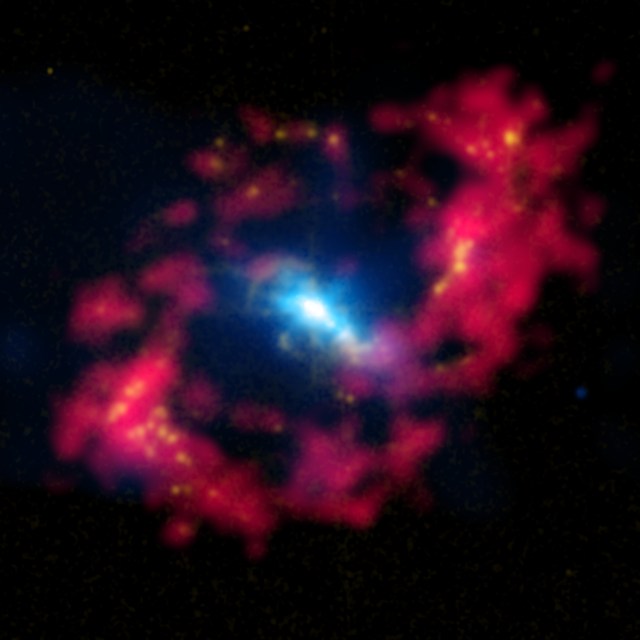NASA’s XRISM telescope, aboard the Japanese satellite Hinode, captured data from the center of galaxy NGC 4151, where a supermassive black hole is slowly consuming material from the surrounding accretion disk. The resulting spectrum reveals the presence of iron in the peak around 6.5 keV and the dips around 7 keV, light thousands of times more energetic than what our eyes can see.
An image of NGC 4151 constructed from a combination of X-ray, optical, and radio light shows a fascinating view of this active galaxy. By combining X-ray data from NASA/CXC/CfA/J.Wang et al., optical data from the Isaac Newton Group of Telescopes at La Palma/Jacobus Kapteyn Telescope, and radio data from NSF/NRAO/VLA, researchers were able to create a comprehensive picture of the galaxy.
The spectrum captured by JAXA/NASA/XRISM Resolve provides valuable insights into the inner workings of NGC 4151 and the supermassive black hole at its center. By studying the energy signatures of different elements like iron, researchers can better understand the processes happening near the black hole and in the surrounding accretion disk. This data helps astronomers piece together the complex mechanisms at play in active galactic nuclei like NGC 4151.


